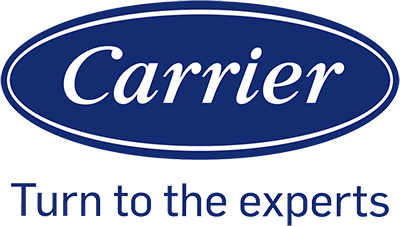Clean air ducts do more than improve indoor air quality they also help our homes and businesses use less energy. Dust, dirt, and debris inside the system force heating and cooling equipment to work harder, which leads to higher energy bills. When we keep ducts clean, the system runs more efficiently and uses less energy.
We often overlook ductwork because it’s hidden behind walls and ceilings, but it plays a major role in how well our HVAC system performs. Professional cleaning removes buildup that blocks airflow, allowing air to move freely and evenly through the space. This simple step supports better comfort and reduces strain on equipment.
By understanding how duct cleaning improves energy performance, we can make smarter choices about maintenance. Along with saving energy, clean ducts also support healthier air and a more comfortable environment. This article will show how the process works, what benefits it brings, and how to keep the system performing at its best.
How Professional Duct Cleaning Enhances Energy Performance

When we remove dust, debris, and leaks from our air ducts, our heating and cooling system runs with less effort. This leads to lower energy use, steady airflow, and fewer spikes in monthly energy bills.
Impact of Clean Air Ducts on HVAC System Efficiency
Clean air ducts allow our HVAC system to push air through without blockages. Dust, dirt, and buildup inside ducts create resistance that forces the system to work harder. This extra strain reduces efficiency and shortens the lifespan of equipment.
When ducts stay clear, the system can maintain the desired temperature with fewer cycles. Balanced airflow also helps each room reach even heating and cooling, reducing hot or cold spots.
A well-maintained system uses less energy to reach the same comfort level. By lowering the workload, we reduce wear on parts such as blowers and motors. This not only improves energy efficiency but also decreases the chance of costly repairs.
Reduction of Utility Bills Through Improved Airflow
Better airflow means less wasted energy. When ducts are clogged, the system must run longer to move air, which increases utility bills. Cleaning restores proper circulation, allowing air to travel freely and evenly throughout the home.
We notice the difference in reduced run times. Shorter cycles mean less electricity or fuel is consumed. Over weeks and months, this translates into measurable savings on our energy bills.
| Condition of Air Ducts | System Run Time | Utility Bill Impact |
|---|---|---|
| Dirty, clogged ducts | Longer cycles | Higher bills |
| Clean, clear ducts | Shorter cycles | Lower bills |
By keeping ducts clean, we make sure the heating and cooling system operates at peak efficiency. This lowers monthly costs without requiring major upgrades.
Energy Savings from Eliminating Air Leaks
Air leaks in ducts cause conditioned air to escape before it reaches the rooms. This wastes energy because the system must produce more heated or cooled air to make up for the loss. Even small leaks can add up to significant waste over time.
Sealing leaks ensures that air flows directly to the intended spaces. This improves comfort and reduces the strain on the HVAC system. Less energy is needed to maintain the set temperature, which results in lower energy bills.
We also avoid uneven temperatures caused by leaks. With sealed ducts, the system delivers consistent airflow, which supports better energy efficiency across the entire home. The combined effect is noticeable energy savings and longer system life.
Health and Comfort Benefits of Clean Air Ducts
When we keep our air ducts clean, we help lower the amount of particles that move through our homes. This supports a healthier living environment and makes the air we breathe more comfortable.
Improvement of Indoor Air Quality
Clean ducts reduce the buildup of dust, dirt, and other debris that can circulate through our rooms. When these particles stay low, the air feels fresher and easier to breathe.
We also notice less settling of dust on furniture and floors. This means we spend less time cleaning surfaces and more time enjoying our space.
Indoor air quality affects how we feel every day. By keeping ducts free of buildup, we cut down on the spread of pollutants that can impact comfort and well-being.
- Dirty ducts: More particles in the air
- Clean ducts: Fewer particles, cleaner air
Reduction of Allergens and Pollutants
Air ducts often collect allergens such as pollen, pet dander, and mold spores. When air moves through the system, these allergens can spread into each room. This can trigger allergies and make symptoms worse.
By cleaning ducts, we remove many of these irritants. This helps limit exposure to common triggers that affect sensitive individuals. Families with pets or people with seasonal allergies often notice the difference most.
Pollutants like smoke residue or chemical particles can also settle inside ducts. Removing them lowers the chance of breathing in unwanted substances. This creates a cleaner space for everyone, especially in homes with children or older adults.
Prevention of Respiratory Issues and Allergy Symptoms
When ducts stay dirty, the air can carry irritants that affect our lungs. People with asthma or other respiratory issues may find it harder to breathe in these conditions. Clean ducts help reduce these risks by lowering the level of airborne triggers.
Allergy symptoms such as sneezing, coughing, or watery eyes often get worse with poor air quality. By keeping ducts clean, we cut down on the spread of allergens that cause these reactions.
This step does not replace medical care, but it supports a healthier environment. Cleaner air helps us feel more comfortable and lowers the chance of flare-ups in sensitive groups.
The Professional Air Duct Cleaning Process
We focus on steps that restore airflow, improve efficiency, and reduce indoor air problems. Each stage of the air duct cleaning process targets specific issues that affect the ventilation system and the quality of indoor air.
Inspection and Assessment of Air Ducts
We begin with a detailed inspection of the ductwork. Using cameras or scopes, we check for dust buildup, blockages, and signs of mold or moisture. This helps us understand the condition of the system before starting any cleaning.
We also look at air registers, vents, and filters. These areas often show early signs of problems such as visible dust or restricted airflow. Identifying these issues allows us to plan the cleaning more effectively.
During the assessment, we note any leaks or damage in the ducts. Even small gaps can reduce efficiency and let in contaminants. By documenting these problems, we can recommend duct maintenance or repairs along with cleaning.
Key checks include:
- Dust and debris levels inside ducts
- Airflow restrictions or clogged air ducts
- Moisture sources that may cause musty odors
- Structural issues affecting performance
Removal of Dust, Debris, and Contaminants
Once we complete the inspection, we use specialized equipment to remove dust and debris. High-powered vacuums and rotating brushes clean the duct surfaces without releasing particles into the home. This step improves airflow and helps maintain clean air ducts.
We pay attention to areas where dust collects the most, such as bends and joints in the ductwork. These spots often trap contaminants and reduce system efficiency. Removing buildup from these areas is essential for proper ventilation.
In some cases, we apply safe sanitizing agents. This helps reduce bacteria and allergens that may circulate through the ventilation system. We only use products designed for air duct cleaning to avoid leaving harmful residues.
Benefits of removal:
- Cleaner indoor air
- Reduced strain on HVAC equipment
- Fewer allergens and irritants in circulation
Addressing Clogged Air Ducts and Musty Odors
Clogged air ducts can restrict airflow and cause uneven heating or cooling. We clear these blockages to restore proper circulation throughout the system. This step also prevents the HVAC unit from working harder than necessary.
Musty odors often come from moisture or mold inside the ducts. We identify the source of the smell and take steps to clean and dry the affected areas. If needed, we suggest further duct maintenance to prevent the problem from returning.
We also check insulation and sealing around ducts. Poor sealing can let in damp air, which contributes to musty odors. Addressing these issues helps maintain a cleaner and more efficient ventilation system.
Steps we take include:
- Removing blockages from clogged air ducts
- Cleaning areas with moisture buildup
- Treating odor sources with proper cleaning methods
- Recommending repairs to prevent future problems
Long-Term Maintenance and Best Practices
We can keep our heating and cooling system efficient by setting a clear cleaning schedule and following simple habits that protect the equipment. These steps help reduce strain on the HVAC system and support steady performance over time.
Scheduling Regular Duct Cleaning
We should schedule duct cleaning based on usage, air quality, and system age. For most homes, every 3 to 5 years is a reliable guideline, but households with pets, smokers, or allergy concerns may need it more often.
A regular schedule helps prevent dust, pollen, and debris from building up in the air ducts. This buildup restricts airflow, which forces the HVAC system to work harder and use more energy.
We can keep track of cleaning dates on a calendar or use reminders in a phone or home maintenance app. Keeping records also helps us understand patterns, such as how quickly dust returns or if airflow problems appear sooner than expected.
Key benefits of consistent cleaning include:
- Better airflow through ducts
- Lower energy use from reduced strain
- Cleaner indoor air for daily comfort
By treating duct cleaning as part of routine home maintenance, we make it easier to keep the system running smoothly without waiting for problems to appear.
Extending HVAC System Lifespan with Proper Care
We can extend the life of our HVAC system by pairing duct cleaning with other simple upkeep tasks. Clean ducts reduce wear on fans, filters, and coils because the system doesn’t need to push air through heavy blockages.
Changing filters on time is also critical. A clogged filter raises pressure inside the system, which can shorten the life of the blower motor. Using the right filter size and rating ensures proper airflow and protection.
It also helps to inspect ducts for leaks or loose connections. Even small gaps waste energy and force the heating and cooling system to run longer. Sealing these areas keeps airflow balanced and reduces wasted effort.
Best practices for long-term care include:
- Replace filters every 1–3 months
- Seal duct leaks with proper materials
- Keep vents clear of furniture and dust
- Schedule professional inspections every few years
By combining duct maintenance with these habits, we lower repair risks and help the HVAC system last longer while maintaining steady performance.




